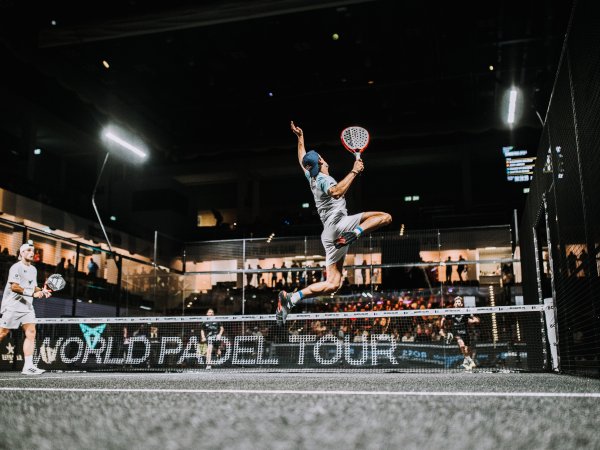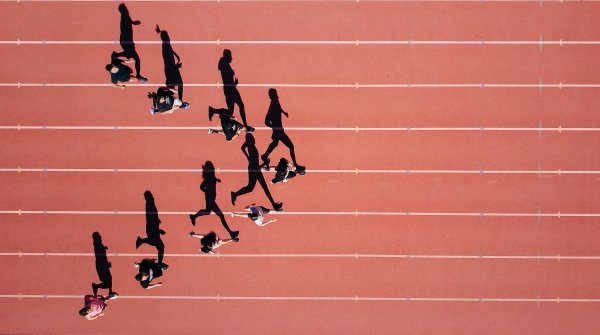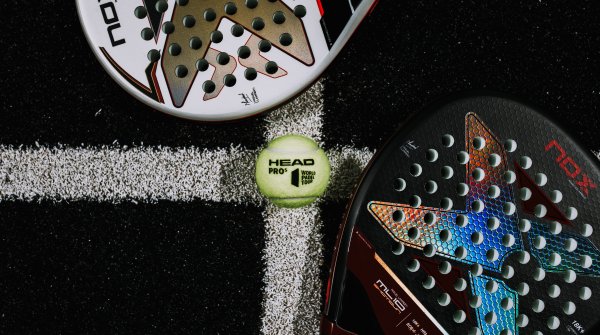Quarter-finals of the BOSS German Padel Open. People stand in small groups on the forecourt of the Castello multipurpose hall in Düsseldorf. Between them, the world's elite of the padel scene strolls to the entrance, relaxed, their large bags slung over their shoulders, sometimes engrossed in a conversation, sometimes completely focused on the task at hand. And: virtually unmolested by bystanders.
In padel hotspots like Spain or Argentina, that would hardly be conceivable. There, numerous autograph requests and selfie requests would have delayed the arrival of Paula Josemaría and Ariana Sánchez or Arturo Coello and Agustín Tapia in the Players Lounge. On the one hand, the relative anonymity with which even absolute top duos can move around a German tournament shows that the development of the sport of padel is still in its infancy in this country. On the other hand, however, the fact that an international event with thousands of fans is taking place on German soil at all speaks for the growing interest in the trend sport.
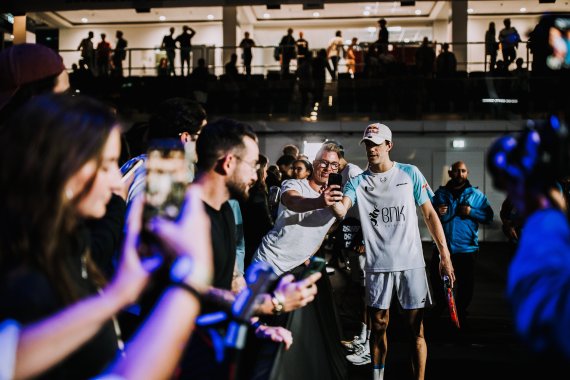
This could now get a major boost: During the German Padel Open, the first stop of the World Padel Tour in Germany, the pros made the best advertisement for their high-speed sport in the glass cage with spectacular rallies. "We assume that this has a charisma," Jasper Ahrens, board member of the German Padel Association, said in Düsseldorf about the event. "In Sweden, for example, the development has exploded again after the first big tournament."
Ahrens believes padel tennis should take off in Germany through an event like the German Padel Open. If one wants to stay linguistically in space, the trend sport has long since reached orbit in other nations - especially in Spanish-speaking countries. Given the history of the sport, that's not surprising.
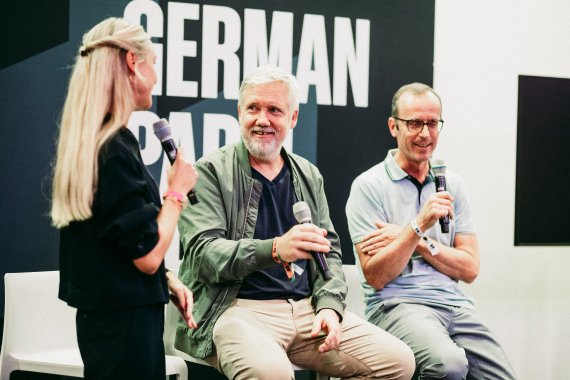
Originally, padel comes from Central America. In the late 1960s, businessman Enrique Corcuera had the scaled-down tennis court of his holiday home in Acapulco surrounded by high walls and a metal fence. Whether the walls were intended as a barrier to the neighbouring property or as a clever extra for exciting rallies seems unclear. What is certain, however, is the result. In the Pacific resort, "Paddle Corcuera" was born.
A few years later, a Spanish friend of the padel inventor brought the new sport to the Iberian Peninsula. In a tennis club in Marbella, Alfonso of Hohenlohe-Langenburg built two courts, and soon the first tournaments were played along the Costa del Sol. This caught the attention of Julio Menditenguia. The Argentine millionaire brought the sport into the spotlight in his homeland in the mid-1970s. In the meantime, major tournaments are also held in Brazil, Chile, Paraguay or Uruguay.
And its popularity continues to grow. Padel is a sport that appeals to all ages and fitness levels. The doubles form of play adds a strong social component. What's more, celebrities can infect their fans with padel fever - even if they come from other sports.
In Germany, Hansi Flick or Jürgen Klopp have invested in padel. In Sweden, it's Zlatan Ibrahimovic. Together with Thomas Sandström, the enfant terrible of Swedish soccer founded "Padel Zenter" and thus brought the sport closer to his countrymen. According to estimates, more than seven percent of the Swedish population play padel tennis. Currently, "King Zlatan" rules over five facilities whose courts meet the highest international standards. However, most of the country's facilities are operated by We Are Padel and Padel United.
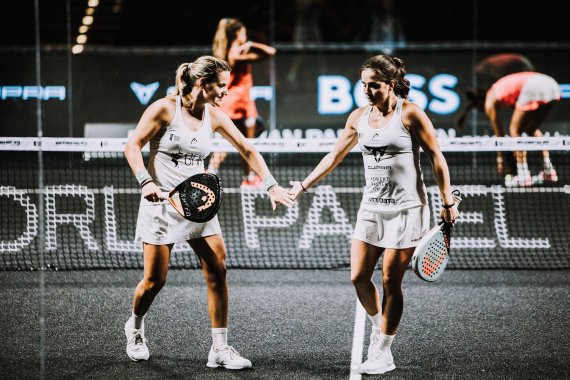
With a total of 4,200 courts, Sweden ranks third in Europe. Spain is the undisputed leader, with 15,300 courts at the beginning of 2023 according to the Global Padel Report. Second place goes to Italy with 6,470 courts. Germany is currently at the bottom of the table with around 250 courts. Outside Europe, Argentina leads the way with just under 5,000 courts.
There is little doubt that padel will continue to grow in the coming years. From its current level of almost 40,000, the number of courts worldwide is soon expected to more than double. By 2026, there could be around 85,000.
In Europe, France, the UK and Germany form the "Big 3" of promising markets. In the United Kingdom, Padel United, presumably the world's largest padel provider, is looking to expand into all regions, from London to Glasgow to Bristol. In France, President Emmanuel Macron even announced the construction of 500 padel courts in the run-up to the 2024 Olympic Games.
In Germany, one of the things being relied on is the cooperation between the German Padel Association and the German Tennis Federation. "It will not be enough for further growth if there are padel courts only in big cities like Hamburg, Munich, Berlin and Cologne," said Peter Mayer, managing director of the German Tennis Federation, during the German Padel Open. "We want and need to gradually bring the sport to the area and thus closer to the people." He added that the DTB, with its 9,000 clubs and tennis as Germany's third-largest sport, has very good prerequisites for this.
Other exciting markets are emerging in Arab countries or in the USA. In Kuwait, for example, the trend sport has arrived not only among adults, but also among children and teenagers. And in the United States, there should be around 30,000 courts by 2030. Currently, there are 180 courts, writes Padel Magazine.
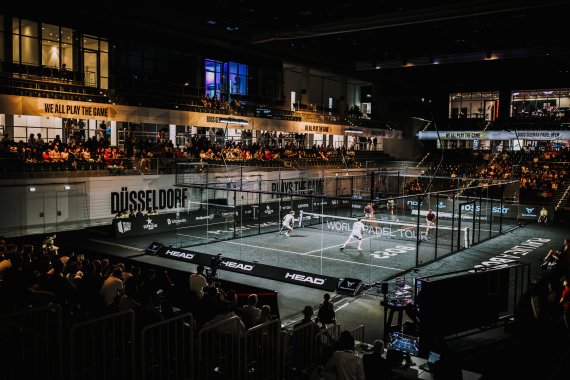
In padel, however, growth is not synonymous with the creation of new courts. In Spain, where the booming sport with around five million active players only has to give way to soccer, there is hardly any demand. There are already 325 pitches per million inhabitants. The focus is now on startups that develop digital services for the sport and pitch builders that offer their expertise globally.
In 2022, the global padel market will already be worth an estimated two billion euros. Infrastructure accounted for a large share, with €1.2 billion for operators and €200 million for equipment manufacturers. The Global Padel Report predicts that the value of the market for padel club operations will quadruple by 2026. The reasons for this are not only the construction of new courts, but also rising prices for their use.
Equipment such as rackets, clothing and balls accounted for a further 550 million. If the number of padel enthusiasts increases, retailers can prepare themselves for a corresponding rise in demand for sporting goods.
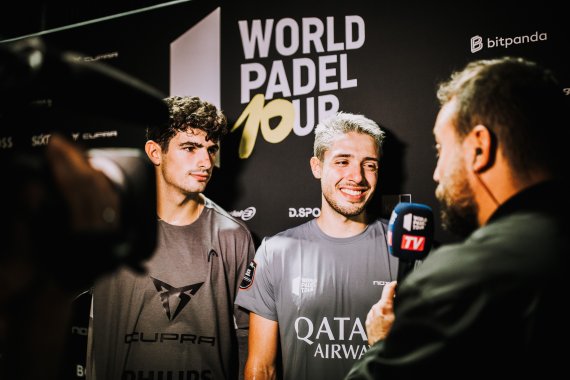
The third area of the padel market is the professional segment. In 2022, it reached 50 million euros, divided into tickets (15) and TV and other media (35). Here, too, development is far from complete. On the contrary, another milestone is imminent.
Most recently, Qatar Sports Investment, which among other things owns French soccer giant Paris Saint-Germain, announced the acquisition of the World Padel Tour from Spanish beer producer Damm. QSI wants to merge the tournament series with its own Premier Padel Tour and thus create an even more attractive product.
"I wish them only the best and I am sure they will succeed," says Enrique Marques. However, even the CEO of the World Padel Tour cannot predict how exactly professional padel sports will develop. "The growth is not the same in all countries. In some, padel is huge; in others, it's still in its infancy." However, he said, one must always enter a market at a reasonable pace. "There's no point in rushing things. First, people need to play padel. Then they will be interested in a professional league."
Marques sees Germany on a good path, not least because of the German Padel Open. "The players are not only satisfied, they are excited. They see this specially designed center court and the professional setup, and they also know that padel is still on the rise in Germany. I'm firmly convinced that padel will go through the roof in Germany as well after this first WPT tournament." Perhaps Paula Josemaría, Arturo Coello & Co. won't be able to avoid answering numerous autograph requests between the car park and the hall entrance at the next event.

 Sports BusinessSki Mountaineering Goes Olympic: What Milano-Cortina 2026 Means
Sports BusinessSki Mountaineering Goes Olympic: What Milano-Cortina 2026 Means
- ISPO awards
- Mountain sports
- Bike
- Design
- Retail
- Fitness
- Health
- ISPO Job Market
- ISPO Munich
- ISPO Shanghai
- Running
- Brands
- Sustainability
- Olympia
- OutDoor
- Promotion
- Sports Business
- ISPO Textrends
- Triathlon
- Water sports
- Winter sports
- eSports
- SportsTech
- OutDoor by ISPO
- Heroes
- Transformation
- Sport Fashion
- Urban Culture
- Challenges of a CEO
- Trade fairs
- Sports
- Find the Balance
- Product reviews
- Newsletter Exclusive Area
- Magazine
